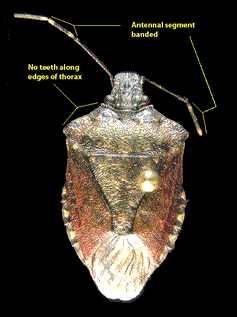Published by

Linda Chalker-Scott
Dr. Linda Chalker-Scott has a Ph.D. in Horticulture from Oregon State University and is an ISA certified arborist and an ASCA consulting arborist. She is WSU’s Extension Urban Horticulturist and a Professor in the Department of Horticulture, and holds two affiliate associate professor positions at University of Washington. She conducts research in applied plant and soil sciences, publishing the results in scientific articles and university Extension fact sheets.
Linda also is the award-winning author of five books: the horticultural myth-busting The Informed Gardener (2008) and The Informed Gardener Blooms Again (2010) from the University of Washington Press and Sustainable Landscapes and Gardens: Good Science – Practical Application (2009) from GFG Publishing, Inc., and How Plants Work: The Science Behind the Amazing Things Plants Do from Timber Press (2015). Her latest effort is an update of Art Kruckeberg’s Gardening with Native Plants of the Pacific Northwest from UW Press (2019).
In 2018 Linda was featured in a video series – The Science of Gardening – produced by The Great Courses. She also is one of the Garden Professors – a group of academic colleagues who educate and entertain through their blog and Facebook pages. Linda’s contribution to gardeners was recognized in 2017 by the Association for Garden Communicators as the first recipient of their Cynthia Westcott Scientific Writing Award.
"The Garden Professors" Facebook page - www.facebook.com/TheGardenProfessors
"The Garden Professors" Facebook group - www.facebook.com/groups/GardenProfessors
Books: http://www.sustainablelandscapesandgardens.com
View all posts by Linda Chalker-Scott

Hmm, not yest in WA? It’s here in the Willamette Valley (Oregon) and quite prolific at some sites. Fortunately, not yet causing the extensive damage as is occurring in the eastern US.
A year ago, people in the mid Atlantic were frantic about stink bugs. They were everywhere, inside and outside homes, damaging crops and vegetable gardens, and making a general nuisance of themselves. Forecasts were that the problem would continue to grow, particularly after the record warm winter. But, now they’re largely forgotten, hardly seen and barely a problem. It doesn’t seem as if anyone understands why they’re gone, but we’re not sad to see them go.
Unfortunately, they’re not gone from my central Virginia garden.
Yep, quite common here in central VA, but they don’t really cause much damage in my garden. Some areas around town are quite infested, but thankfully they’ve left my yard alone.
I live in West Virginia and we still have them and they are just now starting to try to find themselves a winter home. We own two homes, one is a in town rental and we have serious problems with them there. The house is surrunded by trees. We have them at our country home and they don’t seem as bad,but we still have them. I can’t stand them. They are everywhere. They fly into your home as soon as you open the door and a few can turn into an infestation in a very short period of time so beware.I’m not usually this upset about bugs but these get to me.I camp and spend a lot of time outdoors. so I’m not very squimish about bugs, but these are different. Since there is no way to get rid of them make sure your house is caulked with no way for them to invade. protect your gardens as best you can. They say the are disappearing but we still have them and I don’t think they are going away any time soon. We need to find a solution soon. They want to introduce yet another foreign insect to our eco system and honestly I don’t see how that will help because it will be another problem father down the road. So beware and try to keep them out as best as you can because we are going to be stuck with them for awhile.
In response to Mr. Reed’s post, it has been posited by the UMd’s Michael Raupp that there has been an increase in the spider/mantis/assassin population as they find the stinkbug delicious. Based on this year’s early spring and subsequent heat-up, populations should be through the roof but it has not been the case. Crop damage in my garden has been relatively light compared to 2008-2010 when all the tomatoes had little white spots
from their proboscis. Apples seemed to fare the worst this year but it only affected a few millimeters and was easily peeled off before a delicious pie was made.
You can participate as a citizen scientist in a BMSB stinkbug research effort by contributing information at this site http://www.stinkbug-info.org
Sponsored by the Pennsylvania Dept. of Agriculture and Penn State Extension.
This from University of Maryland IPM Weekly Report…
“…researchers are finding that around 20-25% of egg masses
of brown marmorated stink bugs are being parasitized by a native wasp. The
native wasp seems to be adapting to this new host very nicely.”
Here in Vancouver,WA across the Columbia River,on East side near I-205 N and WA Hwy 14,these bugs are coming out in droves,around my house,seeking warmth for fall/winter months. I’ve seen them for at least three Autumns now with numbers increasing,especially this season.
Ok, caught one of these in my apartment…is there someone somewhere that wants to get a hold of specimens??? I have it in a dasani bottle out side right now and was not sure what to do with it.